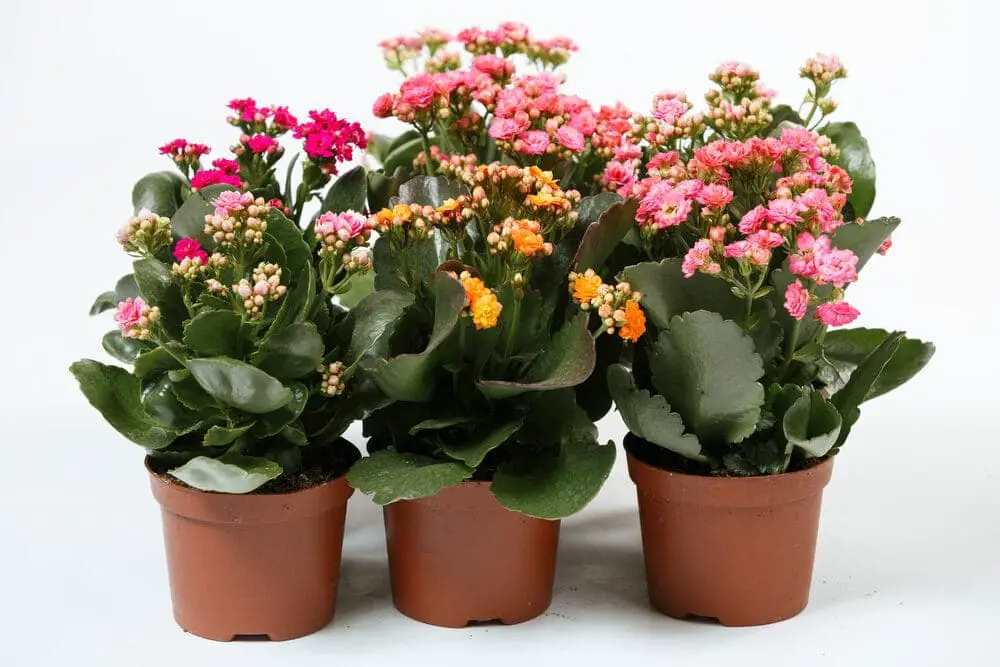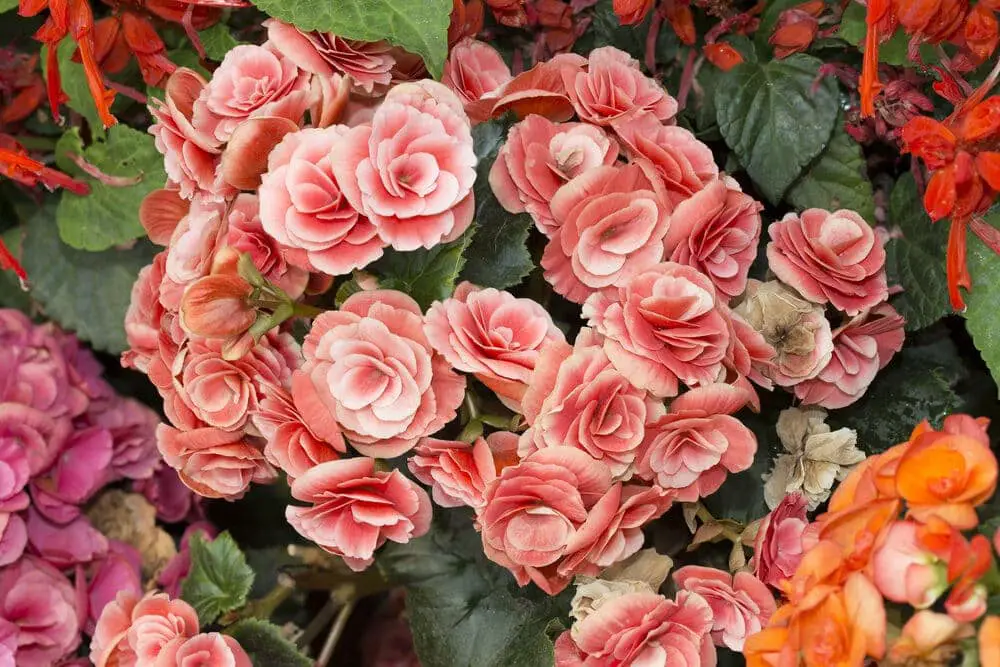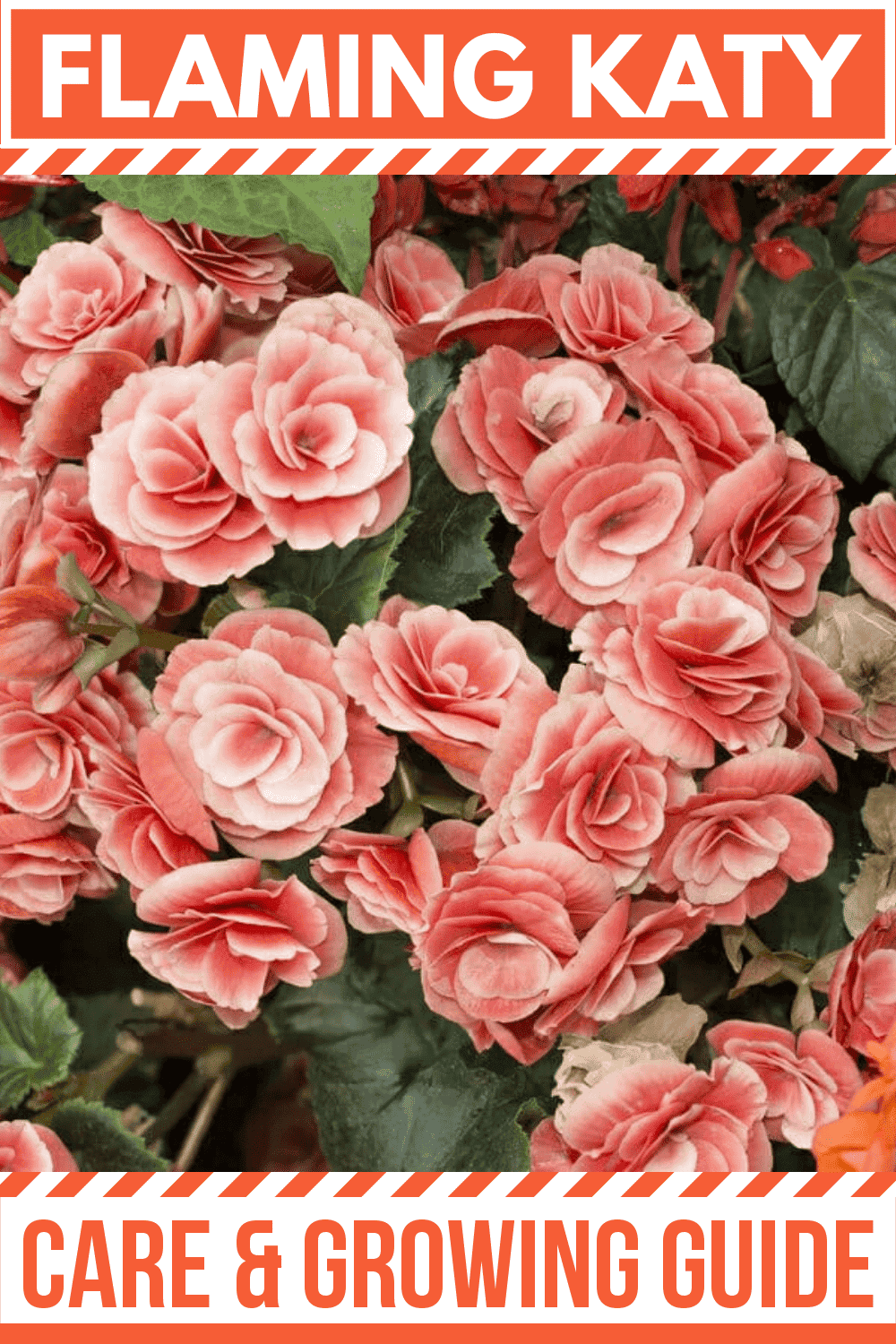This type of plant is known for its bunch of vibrant flowers.
The Flaming Katy plant is a common gift flower, but they don’t last too long in homes since they are not correctly cared for.
The flowers can last for months if the conditions are right. If you are patient and provide them with a little extra attention, you can have beautiful red, orange, yellow flowers growing throughout the season.
Flaming Katy Care & Growing Guide
1. Light Requirement
During the winter, the Flaming Katy needs to be put under complete darkness for about a month. The night helps the plants prepare to flower for a springtime bloom. When its month of darkness is over, it needs to be placed in bright indirect light and have at least an hour of full sun a day. If it does not get enough light, it will grow leggy, and its flowers will develop a lackluster bloom.
2. Water
Many people do not know it, but the Flaming Katy is a succulent plant. Therefore, it does not need a lot of water despite having such a thick bloom of flowers.
Water the soil until it is damp, and then let it dry out completely before watering it again.
You know if it needs to be watered if the leaves start drooping.
3. Climate and temperature
The flaming Katie does not need to be in humid areas, so it does not need to be misted or placed by a humidifier. But it can handle him humidity quite well. No matter what percent the air’s moisture is, it won’t affect the plant or its bloom.
This plant does well between 50 F and 72 F, but it’s okay if the temperature drops or rises slightly. Avoid the winter frost at all costs, or you can damage the bloom and stem of the plant. If the flaming Katy is in a container outside, leave it out during the summer, spring and fall, and bring it in during the winter.

4. Soil
This plant needs soil that is well-draining and has a portion of it consisting of sand. It can also be planted in a cactus or succulent potting mix.
If the plant needs to be fertilized, do not do it often. Once every 3 or 4 months is fine. Use a fertilizer that is designed for flowering plants.
5. Repotting
After it’s seasons of bloom is over, it is recommended to repot it with fresh soil that is free draining. But you don’t have to do that after every bloom. It is best to repot it around springtime. While repotting, take your time and be very careful with this plant. Too much movement and shaking are bad for the leaves, and they will snap off very easily.
6. Speed of Growth
Because of the number of flowers it supports, the flaming Katy’s speed of growth is slow. It takes around four years for the plant to reach 18 in.
7. Height and Spread
At its most mature, this plant will only reach about 18 inches n in height and 8 inches in its width.
8. Trimming
Because of this plant’s slow growth, it is not recommended to trim it often.
If you want to trim your plant to prolong the bloom, deadhead the flowers. This means that when the first few flowers begin to wilt, quickly remove them by pinching off the top half of the flower just above the first set of leaves.

Is the Flaming Katy Plant Poisonous?
Yes, the Flaming Katy is poisonous to both humans and animals if it is eaten. So keep this plant away from small children. In fact, the Flaming Katy is so poisonous that if a human or animal eats it, they will develop heart problems. If this plant grows in the wild is coming for that area to have a problem with dead livestock and Wildlife.
If you have pets, do not bring this plant into your home or in your garden.
It is recommended to use gloves when touching it. If the sap gets on skin or fur, it can cause irritation or a rash.
Keep reading: Blue Star Creeper Care & Growing guide
Can Flaming Katy Grow in Water?
No, the Flaming Katy cannot grow in water. It is a succulent plant that is used to dry air environments at the Madagascar desert that it comes from. If you tried to grow it in water, it can quickly become waterlogged and die.
Does the Flaming Katy have flowers, and how do I get them to bloom?
Yes, the Flaming Katy is known for its bountiful harvest of flowers that last through two to three seasons every year. They can come in a variety of colors, depending on the type of kalanchoe plant you get. Some of the varieties of this plant have over 50 buds.
If you want to ensure a full and bright bloom, make sure this plant gets plenty of sunlight, and keep it in an area that is not too warm. The flowers do well in cool weather. As the flowers begin to fade, deadhead them to stop other flowers from wilting as well.
Learn more:
Common Flaming Katy Pests and diseases
- Phytophthora occurs in Kalanchoe plants when the soil is too wet for too long it is a fungus that attacks and kills the roots and then slowly makes its way up the stem, leaving black mold wherever it goes. The mold causes flowers to wilt and drop. To fight against it, unpot the plant and expose the roots to hot steam. Cutaway any diseased or slimy roots. Heat is an effective killer against this fungus. When it’s time to repot it, lightly apply a fungicide to the roots and place in brand new soil.
- Mealybugs are typical bug gardeners fight off to keep their flaming Katy healthy. The bugs kill the plant by sucking out nutrients in sap from stems and leaves. They also produce honeydew, which is a wax that attracts other bugs and turns into black mold.
- To fight Mealybugs off, spray insecticide or rubbing alcohol on the plant when they’re gone wash rubbing alcohol off of the leaves and stems.
Also read:
Conclusion
- Kalanchoe plants are known for their vibrant bloom.
- The Flaming Katy is poisoning and an irritant to the skin.
- Many people throw this plant away when its bloom is over because the leaves and stems are so ugly.
- The Flaming Katie’s original home is Madagascar.
- This plant is so poisonous that it can give humans and animals heart problems in ingested
- Humidity does not affect this plant.

Victoria is the owner and main author of hobby plants. She loves spending her free time in her garden planting and taking care of her plants. Victoria hopes you enjoy the content here!
![Queen Of The Night Flower [Complete Plant Care Guide] Queen Of The Night Flower [Complete Plant Care Guide]](https://www.hobbyplants.com/wp-content/uploads/2022/07/queen-of-the-night-flower-300x158.jpg)
![Mother Of Thousands Plant [Complete Plant Care Guide] Mother Of Thousands Plant [Complete Plant Care Guide]](https://www.hobbyplants.com/wp-content/uploads/2022/07/mother-of-thousands-plant-300x158.jpg)
![How Often Should You Water Pothos? [Complete Care Guide] How Often Should You Water Pothos? [Complete Care Guide]](https://www.hobbyplants.com/wp-content/uploads/2022/07/how-often-to-water-pothos-300x158.jpg)
![Can Snake Plants Live Outside? [COMPLETE CARE GUIDE] Can Snake Plants Live Outside? [COMPLETE CARE GUIDE]](https://www.hobbyplants.com/wp-content/uploads/2022/08/can-snake-plants-live-outside-300x158.jpg)
![Majesty Palm Plant Care: [Complete Beginner's Guide] Majesty Palm Plant Care: [Complete Beginner's Guide]](https://www.hobbyplants.com/wp-content/uploads/2022/08/majesty-palm-care-300x158.jpg)
![Exotic Angel Plant Care: [Complete Beginner's Guide] Exotic Angel Plant Care: [Complete Beginner's Guide]](https://www.hobbyplants.com/wp-content/uploads/2022/08/exotic-angel-plant-care-300x158.jpg)
![Do Coleus Like Sun Or Shade: [Complete Care Guide] Do Coleus Like Sun Or Shade: [Complete Care Guide]](https://www.hobbyplants.com/wp-content/uploads/2022/08/coleus-sun-or-shade-300x158.jpg)
![Snow White Waffle Plant: [Complete Care Guide] Snow White Waffle Plant: [Complete Care Guide]](https://www.hobbyplants.com/wp-content/uploads/2022/08/snow-white-waffle-plant-300x158.jpg)
![Waffle Plant Care: [Complete Beginner's Guide] Waffle Plant Care: [Complete Beginner's Guide]](https://www.hobbyplants.com/wp-content/uploads/2022/08/waffle-plant-300x158.jpg)
![Bird Of Paradise Plant Care: [Complete Beginner's Guide] Bird Of Paradise Plant Care: [Complete Beginner's Guide]](https://www.hobbyplants.com/wp-content/uploads/2022/08/bird-of-paradise-plant-300x158.jpg)
![Purple Passion Plant Care: [Complete Beginner's Guide] Purple Passion Plant Care: [Complete Beginner's Guide]](https://www.hobbyplants.com/wp-content/uploads/2022/08/purple-passion-plant-care-300x158.jpg)
![China Doll Plant Care: [Complete Beginner's Guide] China Doll Plant Care: [Complete Beginner's Guide]](https://www.hobbyplants.com/wp-content/uploads/2022/09/china-doll-plant-care-300x158.jpg)